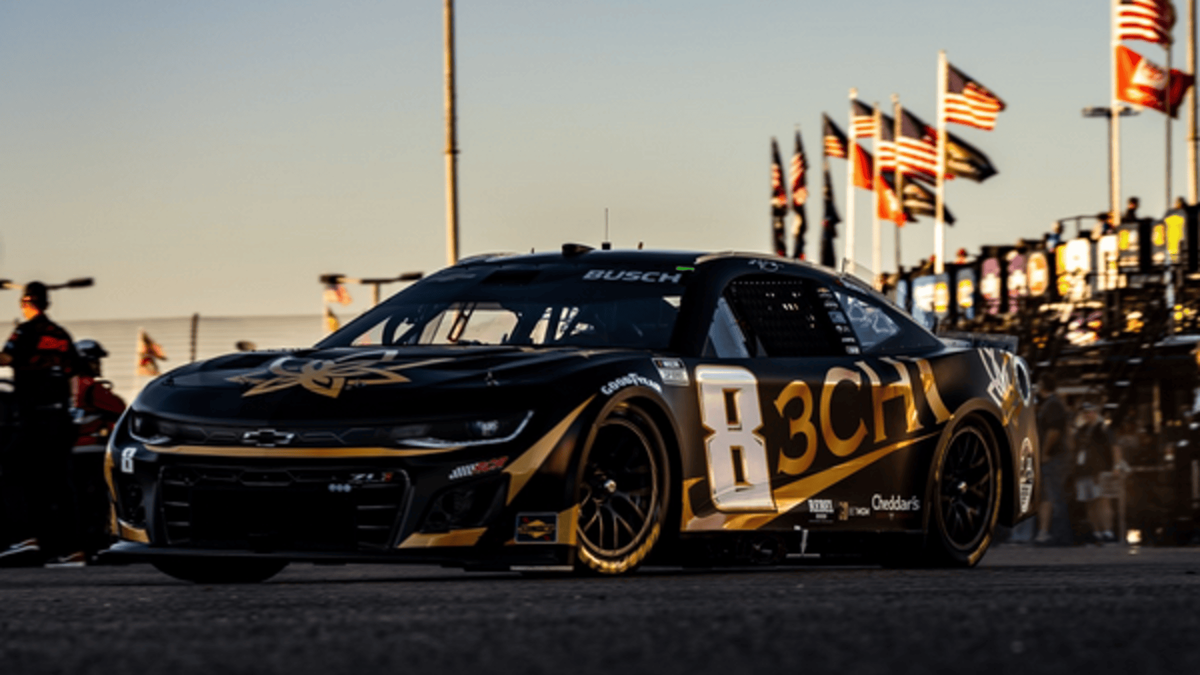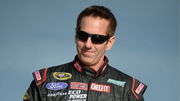

“In my opinion, the importance of this car can’t be overstated. It will allow teams to be profitable. That’s what it comes down to.” Former NASCAR President Steve Phelps said this in 2019 about the upcoming Next-Gen car. The Gen7, introduced under the watch of Phelps, was meant to be a game-changer, promising safer, fairer, and more competitive racing. Instead, they’ve become lightning rods for criticism, with fans, drivers, and insiders blaming Phelps for steering NASCAR into a ditch. These cars, rolled out with bold visions, have left a trail of frustration, with many arguing they’ve hurt the sport more than helped it.
Watch What’s Trending Now!
Phelps’ legacy is now a battleground, and the wounds from his decisions still sting. The COT, launched in 2007, was NASCAR’s first big swing at reshaping stock car racing. As reported in 2008, it used “precision metrology” to enforce strict standards, aiming to boost safety and level the playing field after a string of dangerous crashes. But drivers and fans recoiled. Its infamous rear wing was meant to improve aerodynamics, but fans were still debating “wings vs. splitters” years later. The COT was a symbol of NASCAR losing touch with its roots, with its next version taking this sentiment one notch up.
ADVERTISEMENT
Steve Phelps’ bold move did not pan out
Fast forward to 2022, and the Gen7 car arrived with even loftier promises. Phelps, its biggest advocate, called it “critical to the future of the sport” in an interview, praising its single-supplier model where teams buy parts directly from NASCAR to cut costs and ensure parity. “The great news is that the fan will be the beneficiary as well, because I think the car will have better body styling that the fans I think will really enjoy. If we’re going to do this thing the right way, which we are, the racing, which is already fantastic, should get even better.” Yet, the Gen7 stumbled out of the gate.
The 2022 season showed us glimpses of great racing and the potential that this car possessed. However, this was mainly because everyone was still figuring it out. Ross Chastain won 2 races in 2022 within the first 15 and ended up making the championship 4 that season. However, he could never recapture that glory, and in 2025, the parity that was promised has turned into painful racing.
An X post by ‘nascarman’ revealed that it has been 4 years since Steve Phelps launched the Next-Gen car, writing, “May 5, 2021: NASCAR and the manufacturers officially introduced the Gen 7 cars. Then-president, Steve Phelps: This is a significant moment for our sport. This car is more relevant and includes more innovation than any car in NASCAR history.” Well, the innovation was certainly there, but key drivers have pointed out recently where exactly the Next-Gen has been lacking, and fans have taken notice, too.
ADVERTISEMENT
One fan unloaded: “Every thing the Steve’s touched was pure s—.” This raw anger reflects a fan base that feels betrayed. The Gen7, sold as NASCAR’s future, is now seen as proof that Phelps prioritized control over creativity, leaving fans nostalgic for the sport’s freer, wilder days. However, the drivers have been pretty vocal about the car’s shortcomings, and it has been happening at almost every track.
May 5, 2021: NASCAR and the manufacturers officially introduced the Gen 7 cars
Then-president, Steve Phelps: “This is a significant moment for our sport. This car is more relevant and includes more innovation than any car in NASCAR history.” pic.twitter.com/phLmpYLlZg
— nascarman (@nascarman_rr) May 5, 2025
ADVERTISEMENT
Short tracks continue to suffer, as drivers continue to complain about a lack of passing opportunities. Meanwhile, superspeedways are so heavily reliant on fuel mileage and drafting because of the increased drag these cars experience when outside the draft. Denny Hamlin summed it up best when describing the downfalls of the Next-Gen car. “They just didn’t do enough testing. The car wasn’t ready. We had to delay it one year, we had the COVID thing — it was not thought out enough. We didn’t have multiple racecars on the racetrack testing this car until two months before the very first race. And at that moment is when we all realized holy s—, you cannot pass. It was really, really bad,” said Hamlin last month.
After the recently concluded Texas race, Kyle Larson explained how the Gen 7 issues are glaring. Larson said, “I don’t think the Cup cars are able to run as high as the Xfinity cars in (Turns) 3 and 4 because the higher you run over there, there’s that one bigger bump just past the center. And I feel like the Cup cars, the bumps, upset us a lot. That’s why you see people crash over there so often.” Luckily for Larson, he was not a victim of these notorious bumps in Turns 3 and 4 in the Cup race at Texas, as he won the Xfinity race on Saturday. He looked the most comfortable on the track on Sunday, leading a race-high 90 laps, but succumbed to poor restarts after Turn 4 caused so many crashes.
At one point, race leader Josh Berry spun out after hitting that bump, Chase Briscoe spun even earlier in the race. And as the laps dwindled down, Kyle Busch was putting together an inspiring run, driving up to third place, until he faced the wrath of the bump. Hamlin explained it best while talking about how the Next-Gen car amplifies these bumps, saying, “We have no overbody and all underbody. We have to run these things like a motorboat… When it hits a bump, it spikes the load in the shocks and spins the car out… The higher you go in 3 and 4, the worse that bump is. It’s probably why Blaney didn’t wanna run the high line on that restart.”
ADVERTISEMENT
It’s evident that every race track is bringing out some issue with the car, be it drafting at Talladega or passing at Bristol. It’s at the point where a race at Texas Motor Speedway is producing more cautions than Talladega, a track known for ‘The Big One’. In light of recent races and May 5th being the anniversary of this car, fans took to X to reply to the aforementioned post with some scathing words for NASCAR’s former president, and current commissioner, Steve Phelps.
Top Stories
Greg Biffle Plane Tragedy: What Might Have Caused the Crash That Killed the NASCAR Champ and His Family

“The Biff”: NASCAR Fans Push for Legacy-Defining Award Named After Greg Biffle Following His Tragic Death

Footage Surfaces of Florida Police Arresting NASCAR Veteran Over Disturbing Public Misbehavior

Richard Childress’ Grandson to Be the ‘First Casualty’ of RCR-Kaulig Racing Divorce, Claims Dale Jr.

Who Is Greg Biffle’s Wife? Everything You Need to Know About Cristina Grossu

Fans expose NASCAR’s game plan with the next-gen car
One X user offered a cautious defense: “It’s a great car. May need some tweaks but I think the format is killing the sport. Or at least making it harder to watch.” This fan sees potential in the Gen7 but blames NASCAR’s stage-racing format—shorter segments and frequent cautions—for making races feel predictable. Despite the Gen7’s solid performance, the race’s scripted flow left fans cold. The Gen7’s focus on parity, meant to tighten competition, has instead made some races feel like a procession, missing the unpredictable battles that defined NASCAR’s heyday.
ADVERTISEMENT
Another fan lashed out: “NASCAR loves this car because it requires that the teams buy most of their parts from NASCAR. Cha-ching!” This digs into the Gen7’s single-supplier model, which Phelps sold as a cost-saver. According to Phelps, it was supposed to help smaller teams, but fans see it as a cash grab. Teams must buy parts from NASCAR’s vendors, limiting customization. Fans call it “spec racing,” arguing it robs the sport of the engineering rivalries that once fueled excitement.
Another fan asked a piercing question: “Is it the worst car in NASCAR history? Is it worse than the car of tomorrow?” This captures the heart of the debate. The COT was loathed for its handling. But the Gen7’s hyper-precise steering and restrictive parts model have drawn equal scorn. Fans are torn: some say the COT’s wing was a bigger fiasco, others argue the Gen7’s lack of team autonomy is worse. Both cars, though, reflect NASCAR’s shift toward standardization, a move fans tie to Phelps’ vision.
Phelps may be chasing new roles, but his NASCAR legacy is a minefield. The Gen7 was pitched as the sport’s salvation, but for fans, it’s a scar on a sport they adore. As NASCAR eyes the Gen8, the question hangs heavy: Will it break free from Phelps’ shadow, or will fans be left mourning what once was? The engines still roar, but the echoes of disappointment are hard to drown out.
ADVERTISEMENT
ADVERTISEMENT
ADVERTISEMENT
ADVERTISEMENT

